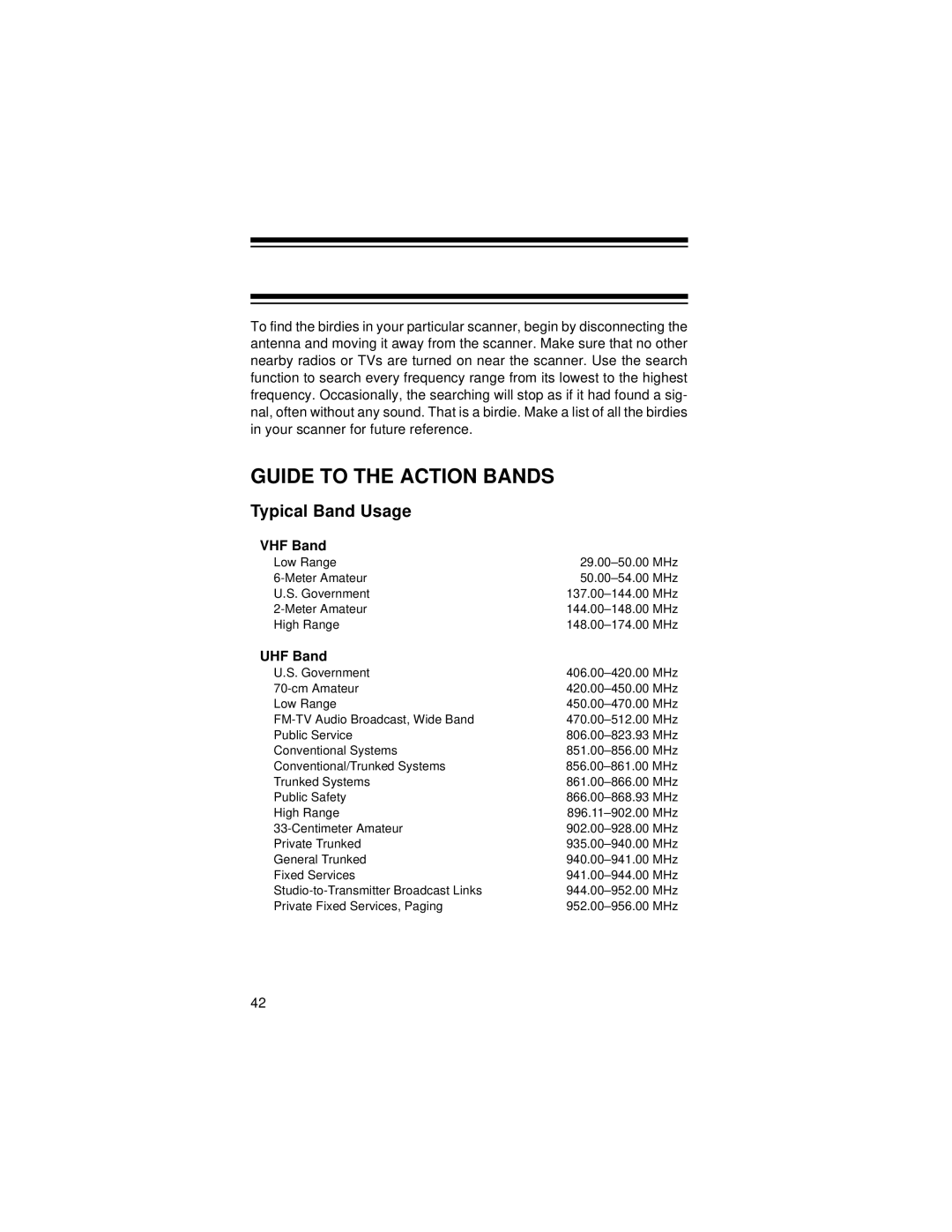
To find the birdies in your particular scanner, begin by disconnecting the antenna and moving it away from the scanner. Make sure that no other nearby radios or TVs are turned on near the scanner. Use the search function to search every frequency range from its lowest to the highest frequency. Occasionally, the searching will stop as if it had found a sig- nal, often without any sound. That is a birdie. Make a list of all the birdies in your scanner for future reference.
GUIDE TO THE ACTION BANDS
Typical Band Usage
VHF Band
Low Range | |
U.S. Government | |
High Range |
UHF Band
U.S. Government | |
Low Range | |
Public Service | |
Conventional Systems | |
Conventional/Trunked Systems | |
Trunked Systems | |
Public Safety | |
High Range | |
Private Trunked | |
General Trunked | |
Fixed Services | |
Private Fixed Services, Paging |
42
